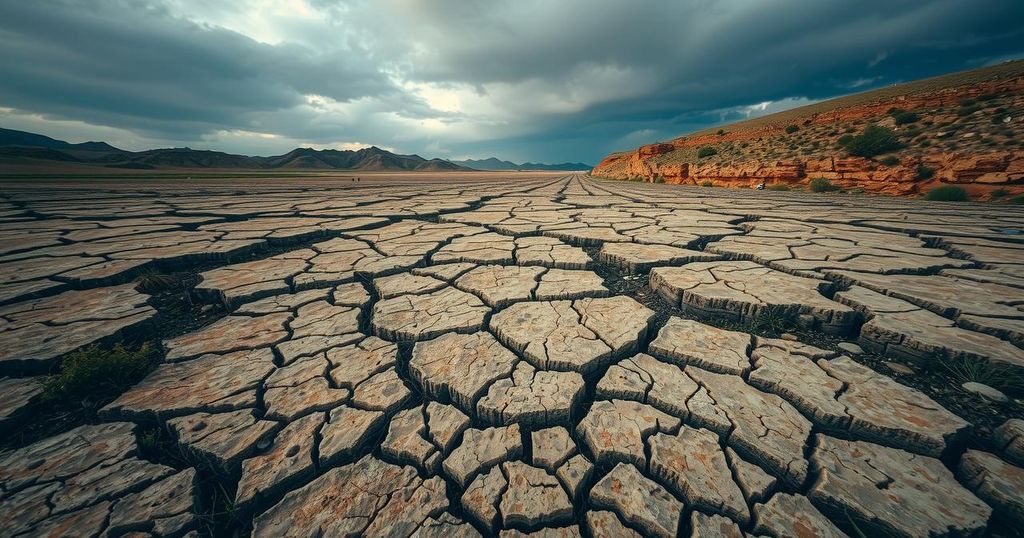Argentina and southern Brazil are experiencing a drier stretch after recent heavy rains that alleviated drought conditions, particularly in western Argentina. Areas such as Cordoba received substantial rainfall, benefiting agriculture. However, with minimal rain predicted through November 1 and rising temperatures, there are concerns for young plants and future crop yields, especially if November remains dry. A weak La Nina may also complicate conditions, necessitating close attention to weather forecasts.
In recent weeks, Argentina and southern Brazil have experienced a shift from severe drought conditions to a more humid environment due to recent storm systems. The onset of the wet season in central Brazil has positively influenced the western regions of Argentina, which had suffered from significant drought to begin the 2024-25 growing season. Notably, the state of Cordoba, a crucial agricultural area in Argentina, received substantial rainfall with estimates indicating over 75 millimeters (approximately 3 inches) in the most affected regions, and some areas even exceeding 150 millimeters (around 6 inches). Although rainfall has been more scarce in the far southern and eastern parts of Argentina, other regions have witnessed improvements in soil moisture, creating favorable conditions for crop growth. Simultaneously, southern Brazil has also enjoyed generous rainfall, ranging from 50 to 100 millimeters (approximately 2-4 inches), which has allowed farmers to proceed with the planting of corn and soybeans effectively. However, following the conclusion of the recent storm systems on October 24, both regions are currently experiencing a drier phase, with minimal precipitation expected through November 1. This dry spell may enable producers to continue their planting efforts or facilitate the harvest of winter crops. Although topsoil moisture has improved considerably, it is essential to note that drought conditions persist in certain areas. Anticipated rising temperatures, with highs forecasted in the upper 30 degrees Celsius (upper 80s to upper 90s Fahrenheit), could potentially stress young plants, especially where soil moisture is limited. This situation is not seen as a grave concern at present, provided the weather forecasts hold true. Longer-term predictions suggest that precipitation may return to the Andes Mountains around November 1, heralding a renewed flow of showers across Argentina and southern Brazil in early November. Nevertheless, should weather models prove inaccurate, the current dry stretch could escalate into a more substantial concern for these regions, particularly Argentina, which is still recovering from the previous drought. Additionally, the development of a weak La Nina phenomenon characterized by cooler-than-normal surface water in the Pacific Ocean poses the risk of generating drier conditions throughout Argentina and southern Brazil during the summer months (December through February). Should November follow suit with insufficient rainfall, it may significantly impact crop resilience. Thus, the impending rainfall predicted for early November is critical for agricultural sustainability in these areas.
This article provides an overview of the recent weather developments in Argentina and southern Brazil, particularly in the context of the agricultural sector. The narrative begins with the severe drought conditions that marked the start of the 2024-25 growing season in Argentina. As a result of a storm system that transitioned from Brazil to Argentina, significant rainfall was recorded, alleviating some of the drought’s effects. The article highlights the varying impacts of rainfall across different regions and discusses the current shift towards a drier phase of weather, while also considering potential future developments, including the influence of La Nina on regional weather patterns. Understanding these conditions is crucial for stakeholders in the agricultural industry, as both immediate weather patterns and long-term forecasts can greatly affect crop yields and food security in these regions.
In conclusion, Argentina and southern Brazil have recently transitioned from a period of significant drought to experiencing beneficial rainfall due to storm systems. While current forecasts indicate a drier phase ahead, the overall moisture levels in the soil have improved substantially, providing some respite for farmers. However, ongoing monitoring of weather patterns and potential impacts from climate phenomena, such as La Nina, are essential to mitigate risks to agricultural production. The forecasted return of rainfall in early November represents a critical juncture for the future of crops in the affected regions.
Original Source: www.dtnpf.com






